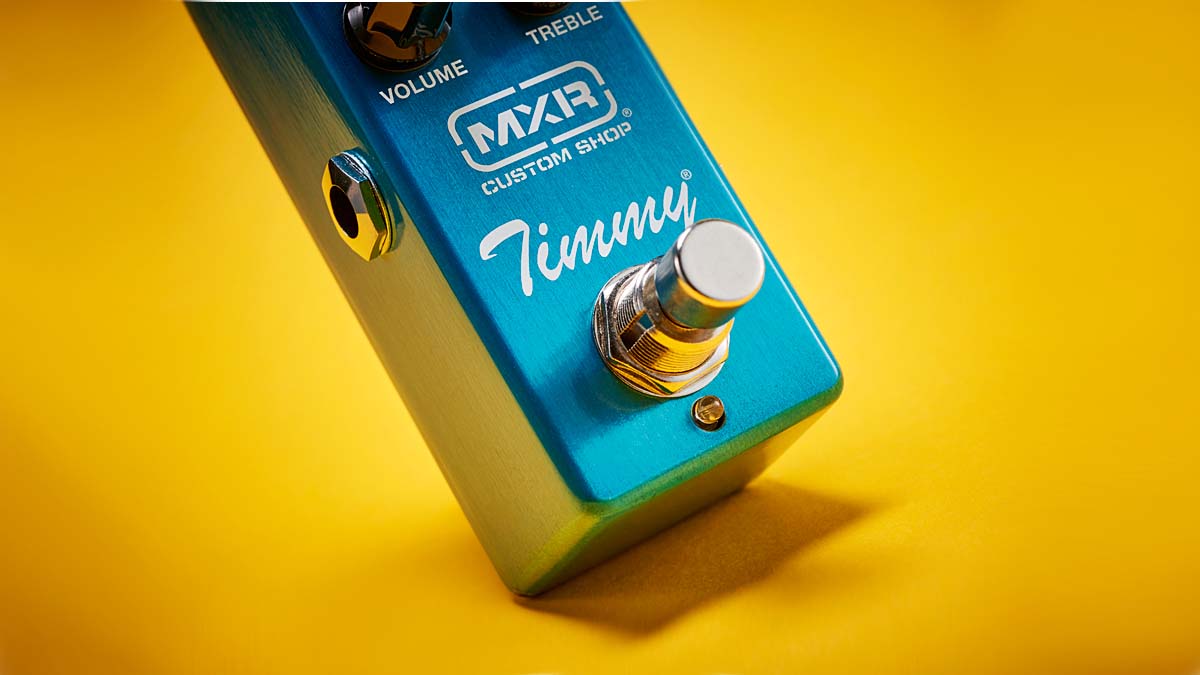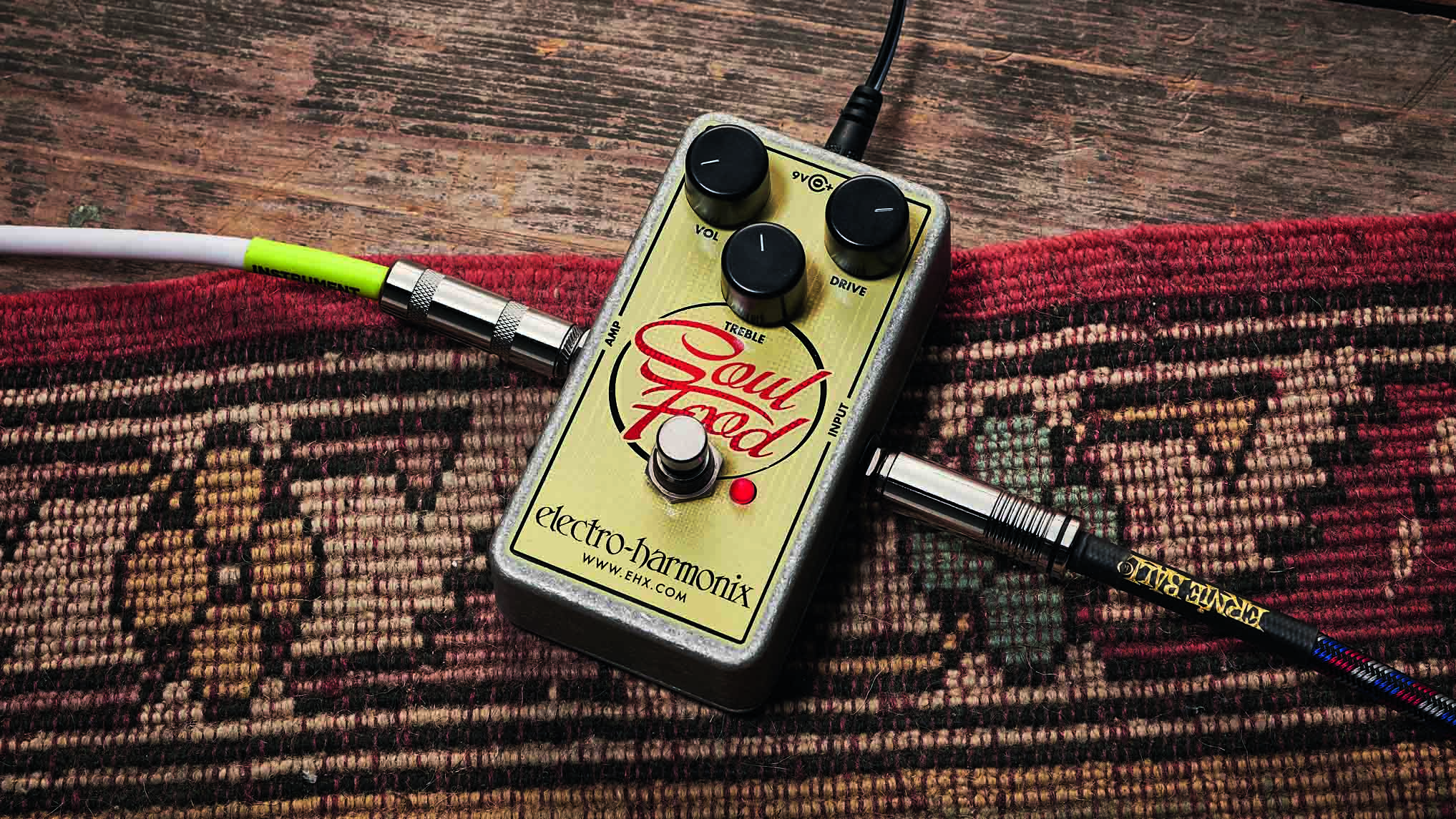MusicRadar Verdict
Smaller, more affordable, more available and just as musical as Paul Cochrane's originals, Timmy remains one of the first names that come to mind when you think of transparent overdrive.
Pros
- +
Classic transparent drive tones.
- +
Three clipping options.
- +
Use as a boost or drive pedal.
- +
Affordable.
- +
Small and compact.
Cons
- -
Bass and treble controls are cut only.
MusicRadar's got your back
What is it?
If we are truly living in the golden age of guitar effects pedals, then the Timmy overdrive pedal is written into the Arthurian legend of the moment – it's a sort of drive pedal Excalibur, a vaunted circuit that does things that none other can.
One of the original boutique overdrives, the Timmy Legend begins in the late 90s with pedal-designer Paul Cochrane. His Tim overdrive offered a two-stage drive sound that didn't interfere with the all-important relationship between your guitar and your amp's tone.
Where the TS-style pedals produced a midrange hump, the Tim was what we'd call transparent. With two footswitches, it could be used as a clean boost or as an overdrive. It had four controls for gain, level, bass and treble and an effects loop.

But Cochrane refined his creation, giving it a smaller footprint. The Timmy was introduced in 2004, slimmed down to a single footswitch for bypassing/engaging the effect, its four-knob setup remaining in situ. It became one of the most sought-after overdrive pedals. Not to mention one of the most talked about.
It's interesting to see the evolution of pedalboard culture with that of social media and internet forums – fertile ground for seeding gear legends and getting players excited about new toys to enhance their tone. Inevitably, demand outstripped supply. If you look for an original "breadboard" Timmy online you should expect to pay around £400.
Which brings us to this mainstream reissue, which houses a Cochrane-approved overdrive circuit in an MXR mini chassis, with the same four controls and a three-way toggle for selecting your clipping options. Now the Timmy is affordable, distributed globally, and now begs the question: having gone mainstream, does it live up to its cult status?
Performance and verdict
The MXR Timmy operates in a similar fashion to the original units. The two EQ controls for bass and treble are reversed so that you turn them clockwise to cut the frequencies and anticlockwise to enhance them.
Want all the hottest music and gear news, reviews, deals, features and more, direct to your inbox? Sign up here.
You have the choice of three clipping patterns, two symmetrical and one asymmetrical. Under the hood you'll find a F353 op-amp chip to help the Timmy perform similarly in smaller enclosure.

This is a touch-sensitive overdrive that works with your playing, a neutral dealer of crunch and output between your guitar and amplifier. That, really, is all that's meant by transparent. There's no huge colouration to your tone.
Whether you set the Timmy as a clean boost to hit your amp's front end harder or dial in some heavier crunch, the dynamics are exceptional. Rolling back your guitar's volume control opens up a lovely range of drive that can work for blues through to rock without touching the pedal's settings.

• Electro-Harmonix Soul Food
If you're looking for that type of touch sensitive, transparent overdrive and boost that keeps your core sound intact, the Soul Food delivers it.
• Ibanez Tube Screamer Mini
Not a transparent drive, but a classic nonetheless that'll beef your midrange up and make your amp sing.
There's something inherently musical about the Timmy's brand of overdrive. It enhances the harmonic response of your amplifier, feeding it some extra juice that you can really lean into and dig in with.
Sure, having the bass and treble controls as cut only won't be everyone's idea of a good time but it's not difficult to find the sweet spot that makes your amp and guitar sing.
Nor will it be hard to find a spot on your 'board for Timmy. As a more affordable, more compact option, we'd find it difficult to mount a case for shelling out big bucks on an original unit.
There are so many overdrives on the market right now. There are so many pedals. Some inevitably will get lost in the mix. But not Timmy. This one arrives on the back of a legend and lives up to its reputation as a pedalboard must-have.
MusicRadar verdict: Smaller, more affordable, more available and just as musical as Paul Cochrane's originals, Timmy remains one of the first names that come to mind when you think of transparent overdrive.
The web says
"The MXR Timmy has more dynamic presence than your regular overdrive. There is a clear top-end chime and warmth in the midrange. It is a more musical-sounding overdrive that blends in beautifully with amplifier crunch – perfect for when you need even more harmonic complexity."
Guitar World
Hands-on demos
Sweetwater
Reverb
Premier Guitar
That Pedal Show
Specifications
- TYPE: Boost/Overdrive
- CONTROLS: Bass, treble, gain, volume, clip toggle switch
- SOCKETS: Input, output, power
- BYPASS: True bypass
- POWER: 9v adaptor only (not included)
- CONTACT: Jim Dunlop
MusicRadar is the number one website for music-makers of all kinds, be they guitarists, drummers, keyboard players, DJs or producers...
- GEAR: We help musicians find the best gear with top-ranking gear round-ups and high-quality, authoritative reviews by a wide team of highly experienced experts.
- TIPS: We also provide tuition, from bite-sized tips to advanced work-outs and guidance from recognised musicians and stars.
- STARS: We talk to musicians and stars about their creative processes, and the nuts and bolts of their gear and technique. We give fans an insight into the craft of music-making that no other music website can.

